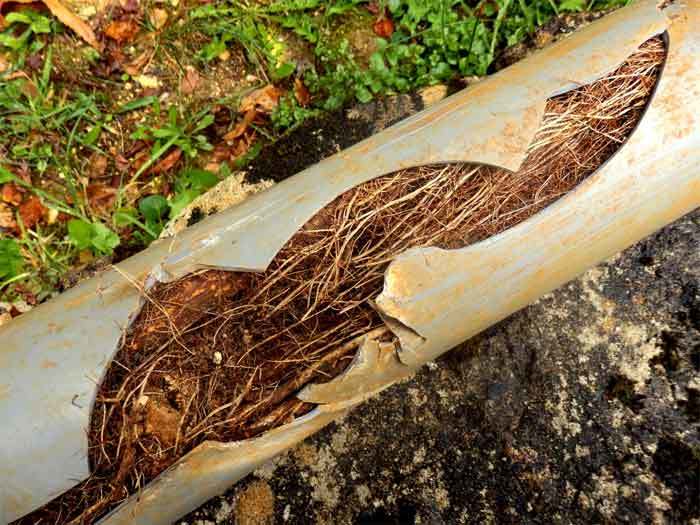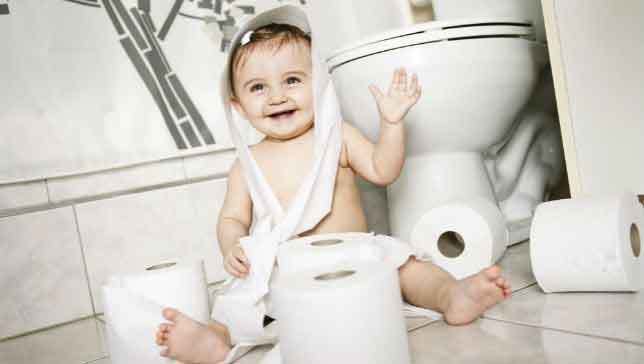Disclaimer: This post may contain affiliate links, meaning we get a small commission if you make a purchase through our links, at no cost to you. For more information, please visit our Disclaimer Page.
If we asked every house owner what their worst nightmare is, unclogging a sewer line would be one of the top answers.
It’s quite common that the sewer line gets clogged, so there’s no reason to fear that you won’t be able to handle this situation.
As many have had problems with this, we explored all of the solutions and came with the ultimate one, including the chemicals.
If you were looking for a fastest and safest way to get rid of the bubbles in your sink, appearing water in your shower and all other signs of clogged sewer line, this step-by-step guide is the perfect solution for you.

How to recognize a clogged sewer line
You are probably speculating and debating with your family members which problem you are actually facing.
We admit that it can be confusing determining whether you are having difficulties with only one part of your plumbing system being clogged, or is it entire sewer line that has been blocked.
In order to make it easy for you and get it clear once and for all, here is the list of most characteristic symptoms of clogged sewer line, explained in details.
1. Slow flow through the drains
This is something that’s been bothering you for some time now. You probably have checked all DIY tutorials on how to fix this problem, but still, you had no luck.
If this happened to you, most certainly you failed to fix it because the problem was not only in the drains but in the entire sewer line.
2. The plumbing system is out of order
You got aware that it’s not only your drains that are causing you trouble the moment you figured out that there are several issues with the plumbing system in your entire home.
One thing you should know is that the sewer line is closest linked to the toilet, so there is the highest possibility that your toilet will be the first one to show the signs of a clogged sewer line.
Right after the toilet, you can accept plumbing problems coming from your kitchen sink followed by a shower or a tub. If this is the case, it's almost certain that you have a problem with the clogged sewer line.
Please bear in mind that it is a good thing to check whether your toilet actually has the most direct route to the sewer line. That happens rarely but could explain clogging signs connected to the toilet appearing later.
On the other hand, if you are experiencing trouble in all other elements except the toilet, it's most likely that you don't have a problem with the sewer line.
3. Water backs up regularly
This is probably the least pleasant sign, but at least it’s easily spotted and recognized. If every time you try to flush the toilet, you see that the water backs up into or comes up in the shower or tub, that is a clear sign that you have a problem regarding sewer line.
When the sewer line is blocked, the water can't flow normally through the drains. It stops and due to the pressure of upcoming water, it starts flowing back up the pipes and appears either in the toilet or at the lowest point in the plumbing system which is usually the shower or the tub.
4. Toilet bubbles
If you try running the water in the bathroom sink, shower or a tub and you instantly hear bubbles or gurgles coming from your toilet, it might be another sign of the sewer line clog.
Why does this happen? There is an easy explanation for this – the main reason the toilet bubbles or gurgles is the fact that there is air trapped in the plumbing system.
To be sure that it is connected to the sewer line, go to the sink closest to the bathroom and run the water for longer than a minute.
If your toilet still bubbles or gurgles, or the level of water in your toilet just raised, it's most likely that you have a problem with the clogged sewer line.
5. Toilet overflows
This can happen multiple times and due to various reasons, but most likely it is connected to the washing machine.
If you have found yourself in a situation where your washing machine is in the process of draining and your toilet suddenly has another plan for you and it starts overflowing, that's another sign of clogged sewer line.
Pay attention to the shower or the tub during this process too, as it can happen that the water backs up exactly in the shower or the tub. This is just another sign that you should be aware of.
In order to be completely sure, go through all of these processes and watch what happens. If you notice one or more signs, it’s inevitable – you’re facing a clogged sewer line.
What causes a clogged sewer line?
Nature.
It's our best friend but also our worst enemy if we don't treat it right. The number one thing that causes a clogged sewer line is tree roots. This is especially present in the old houses, where it's easier for roots to find their way to your plumbing system.

In a search for warmth and nutrients, roots can easily be attracted to the plumbing system as it has both – it produces energy so it’s quite warm around the pipes, and the water that runs through the drains contains lots of different nutrients valuable to the trees.
This explains roots’ need of finding small cracks in the pipes and feeding on the nutrients, which leads to them growing and overwhelming the pipes.
If you add only the basic toilet paper to this, you already raise the chance of clogging.
Another case, that happens rarely, is that people who live in the house clog the sewer line by themselves.
This can happen only if you try to flush a load of toilet paper, some toilet towels, women hygiene products and actually anything that isn’t supposed to go down the drains.

Since grown-up people are aware of this, there are more examples of children clogging the sewer line by flushing much more toilet paper than it is possible to be flushed at once.
In order to prevent this, let your kids know what consequences may appear so they can learn not to play with it.
How to Unclog a Sewer Line with Chemicals
Now we get to the point where you have determined the problem and you are eager to get rid of it.
1. Lower down the pressure
The first thing you need to do is to find a way to release the pressure. Start by turning off the water at the main supply. Start looking for your sewer cleanout line.
To be more precise, it's a short pipe sealed with the screw-on cap. Every sewer line system has one.
When you find it, make sure to remove the cap, enabling any water that has been stuck to drain.
2. Pour down the chemicals
If you have released the pressure, that’s just the first step in unclogging the sewer line completely. For you to finish what you’ve started, you’ll probably need to use the chemicals.
This part is quite easy, as all you have to do is to flush chemicals down the toilet and wait until it’s unclogged. We’ll cover the choice of the chemicals next.
Top 3 chemicals for unclogging the sewer line
In order to choose the best chemical for solving your problem, we have enlisted the top three that are used for unclogging the sewer line.
1. Copper sulfate
This is the most used chemical when it comes to unclogging the sewer line by destroying roots.
All you need to do is flush the copper sulfate down the toilet multiple times, as it goes away really fast. This chemical can be found in stores and you can check this one by Sanco Industries.
2. Dichlobenil
Another powerful chemical used for unclogging is dichlobenil. Its special use is actually with killing roots and unclogging the drains.
You only need to flush once in order to kill roots with dichlobenil and you can choose from a variety of products. Check this one by Roebic Laboratories.
3. Citrus cleaner
This one is probably the safest, as it is completely natural and tested. On the other hand, it's probably the least powerful among these three. If you are interested in trying this product, you can check this one by Patriot Chemical Sales.
Final Word: Unclogging the Sewer Line with Chemicals
Whether you are facing a serious problem with a sewer line or you just want to stay cautious in order to avoid it, this article should help you recognize the problem and act upon it immediately.
If none of these worked for you (they should), then it's no shame to call a plumber for help. Click on the banner below for some assistance.
